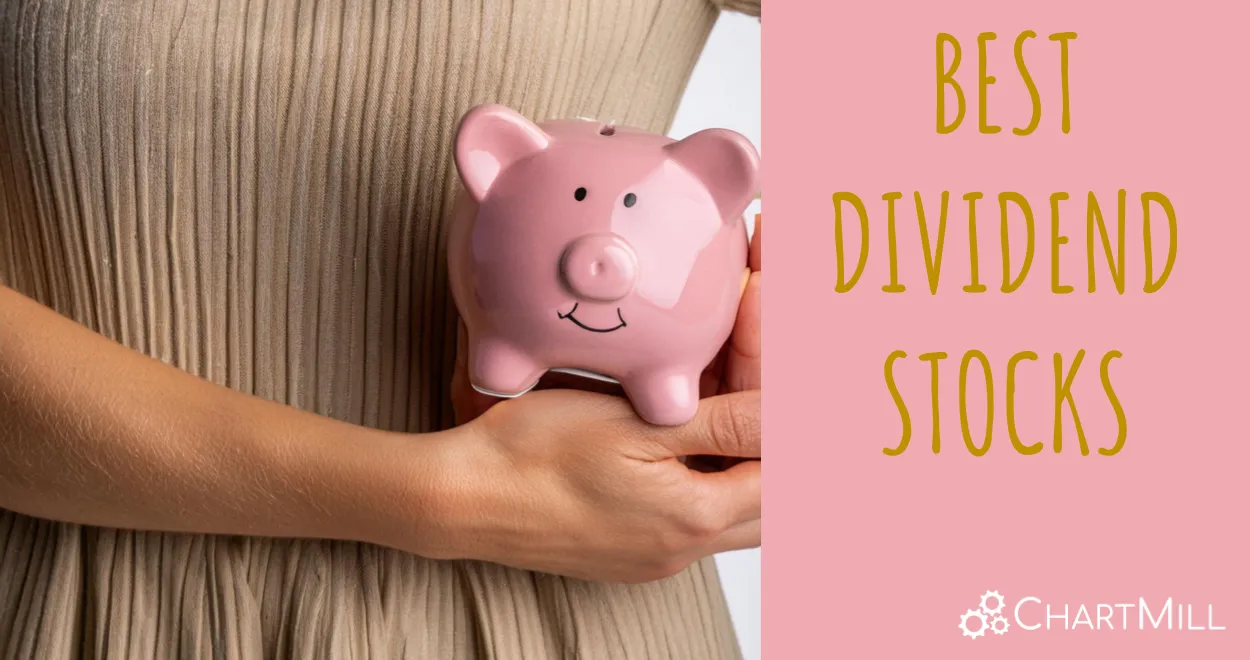Why NYSE:AME provides a good dividend, while having solid fundamentals.
By Mill Chart
Last update: Jun 25, 2024
Unearth the potential of AMETEK INC (NYSE:AME) as a dividend stock recommended by our stock screening tool. NYSE:AME maintains a robust financial footing and delivers a sustainable dividend. We'll delve into the details below.

How do we evaluate the Dividend for NYSE:AME?
ChartMill employs its own Dividend Rating system for all stocks. This score, on a scale of 0 to 10, is determined by evaluating different dividend factors, such as yield, historical performance, dividend growth, and sustainability. NYSE:AME has been assigned a 7 for dividend:
- Compared to an average industry Dividend Yield of 2.28, AME pays a better dividend. On top of this AME pays more dividend than 81.40% of the companies listed in the same industry.
- The dividend of AME is nicely growing with an annual growth rate of 12.17%!
- AME has been paying a dividend for at least 10 years, so it has a reliable track record.
- AME has not decreased their dividend for at least 10 years, which is a reliable track record.
- 18.01% of the earnings are spent on dividend by AME. This is a low number and sustainable payout ratio.
- AME's earnings are growing more than its dividend. This makes the dividend growth sustainable.
Evaluating Health: NYSE:AME
ChartMill utilizes a Health Rating to assess stocks, scoring them on a scale of 0 to 10. This rating takes into account a variety of liquidity and solvency ratios, both in absolute terms and in comparison to industry peers. NYSE:AME has earned a 6 out of 10:
- An Altman-Z score of 5.86 indicates that AME is not in any danger for bankruptcy at the moment.
- The Altman-Z score of AME (5.86) is better than 90.70% of its industry peers.
- The Debt to FCF ratio of AME is 1.82, which is an excellent value as it means it would take AME, only 1.82 years of fcf income to pay off all of its debts.
- Looking at the Debt to FCF ratio, with a value of 1.82, AME belongs to the top of the industry, outperforming 86.05% of the companies in the same industry.
- A Debt/Equity ratio of 0.21 indicates that AME is not too dependend on debt financing.
- The current and quick ratio evaluation for AME is rather negative, while it does have excellent solvency and profitability. These ratios do not necessarly indicate liquidity issues and need to be evaluated against the specifics of the business.
Evaluating Profitability: NYSE:AME
ChartMill utilizes a Profitability Rating to assess stocks, scoring them on a scale of 0 to 10. This rating takes into account a variety of profitability ratios and margins, both in absolute terms and in comparison to industry peers. NYSE:AME has earned a 9 out of 10:
- The Return On Assets of AME (8.87%) is better than 86.05% of its industry peers.
- Looking at the Return On Equity, with a value of 14.70%, AME belongs to the top of the industry, outperforming 84.88% of the companies in the same industry.
- Looking at the Return On Invested Capital, with a value of 11.52%, AME belongs to the top of the industry, outperforming 87.21% of the companies in the same industry.
- The last Return On Invested Capital (11.52%) for AME is above the 3 year average (11.01%), which is a sign of increasing profitability.
- With an excellent Profit Margin value of 19.57%, AME belongs to the best of the industry, outperforming 97.67% of the companies in the same industry.
- AME's Profit Margin has improved in the last couple of years.
- AME has a better Operating Margin (25.95%) than 98.84% of its industry peers.
- In the last couple of years the Operating Margin of AME has grown nicely.
- AME has a Gross Margin of 36.08%. This is amongst the best in the industry. AME outperforms 84.88% of its industry peers.
Every day, new Best Dividend stocks can be found on ChartMill in our Best Dividend screener.
For an up to date full fundamental analysis you can check the fundamental report of AME
Disclaimer
This article should in no way be interpreted as advice. The article is based on the observed metrics at the time of writing, but you should always make your own analysis and trade or invest at your own responsibility.
201.74
-2.1 (-1.03%)
Find more stocks in the Stock Screener
AME Latest News and Analysis



